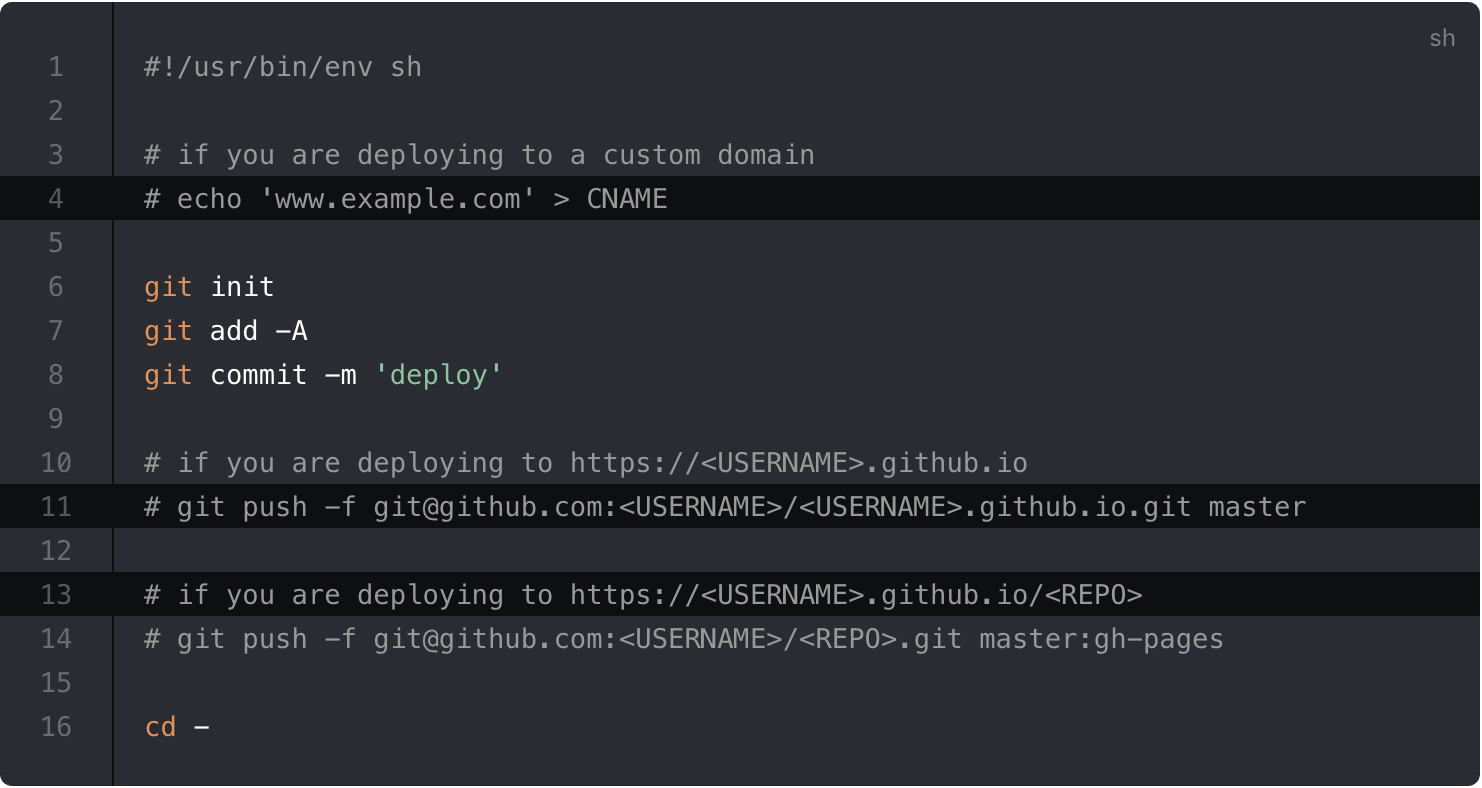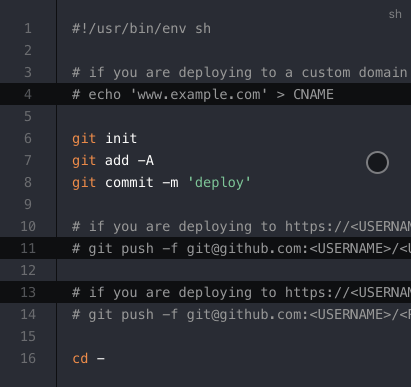# Markdown Extensions
# Header Anchors
Headers automatically get anchor links applied. Rendering of anchors can be configured using the markdown.anchor option.
# Links
# Internal Links
Internal links are converted to <router-link> for SPA navigation. Also, every README.md or index.md contained in each sub-directory will automatically be converted to index.html, with corresponding URL /.
For example, given the following directory structure:
.
├─ README.md
├─ foo
│ ├─ README.md
│ ├─ one.md
│ └─ two.md
└─ bar
├─ README.md
├─ three.md
└─ four.md
And providing you are in foo/one.md:
[Home](/) <!-- Sends the user to the root README.md -->
[foo](/foo/) <!-- Sends the user to index.html of directory foo -->
[foo heading](./#heading) <!-- Anchors user to a heading in the foo README file -->
[bar - three](../bar/three.md) <!-- You can append .md (recommended) -->
[bar - four](../bar/four.html) <!-- Or you can append .html -->
# Redirection for URLs
VuePress supports redirecting to clean links. If a link /foo is not found, VuePress will look for a existing /foo/ or /foo.html. Conversely, when one of /foo/ or /foo.html is not found, VuePress will try the other. With this feature, we can customize your website’s URLs with the official plugin vuepress-plugin-clean-urls (opens new window).
TIP
Regardless of whether the permalink and clean-urls plugins are used, your relative path should be defined by the current file structure. In the above example, even though you set the path of /foo/one.md to /foo/one/, you should still access /foo/two.md via ./two.md.
# Page Suffix
Pages and internal links get generated with the .html suffix by default.
You can customize this by setting config.markdown.pageSuffix.
# External Links
Outbound links automatically get target="_blank" rel="noopener noreferrer":
You can customize the attributes added to external links by setting config.markdown.externalLinks.
# Frontmatter
YAML frontmatter (opens new window) is supported out of the box:
---
title: Blogging Like a Hacker
lang: en-US
---
This data will be available to the rest of the page, along with all custom and theming components.
For more details, see Frontmatter.
# GitHub-Style Tables
Input
| Tables | Are | Cool |
| ------------- |:-------------:| -----:|
| col 3 is | right-aligned | $1600 |
| col 2 is | centered | $12 |
| zebra stripes | are neat | $1 |
Output
| Tables | Are | Cool |
|---|---|---|
| col 3 is | right-aligned | $1600 |
| col 2 is | centered | $12 |
| zebra stripes | are neat | $1 |
# Emoji 🎉
Input
:tada: :100:
Output
🎉 💯
A list of all emojis (opens new window) is available.
# Table of Contents
Input
[[toc]]
Output
Rendering of the TOC can be configured using the markdown.toc option.
# Custom Containers default theme
Custom containers can be defined by their types, titles, and contents.
# Default Title
Input
::: tip
This is a tip
:::
::: warning
This is a warning
:::
::: danger
This is a dangerous warning
:::
::: details
This is a details block, which does not work in IE / Edge
:::
Output
TIP
This is a tip
WARNING
This is a warning
DANGER
This is a dangerous warning
DETAILS
This is a details block, which does not work in Internet Explorer or Edge.
# Custom Title
Input
::: danger STOP
Danger zone, do not proceed
:::
::: details Click me to view the code
```js
console.log('Hello, VuePress!')
```
:::
Output
STOP
Danger zone, do not proceed
Click me to view the code
console.log('Hello, VuePress!')
Also see:
# Syntax Highlighting in Code Blocks
VuePress uses Prism (opens new window) to highlight language syntax in Markdown code blocks, using coloured text. Prism supports a wide variety of programming languages. All you need to do is append a valid language alias to the beginning backticks for the code block:
Input
``` js
export default {
name: 'MyComponent',
// ...
}
```
Output
export default {
name: 'MyComponent',
// ...
}
Input
``` html
<ul>
<li
v-for="todo in todos"
:key="todo.id"
>
{{ todo.text }}
</li>
</ul>
```
Output
<ul>
<li
v-for="todo in todos"
:key="todo.id"
>
{{ todo.text }}
</li>
</ul>
A list of valid languages (opens new window) is available on Prism’s site.
# Line Highlighting in Code Blocks
Input
``` js{4}
export default {
data () {
return {
msg: 'Highlighted!'
}
}
}
```
Output
export default {
data () {
return {
msg: 'Highlighted!'
}
}
}
In addition to a single line, you can also specify multiple single lines, ranges, or both:
- Line ranges: for example
{5-8},{3-10},{10-17} - Multiple single lines: for example
{4,7,9} - Line ranges and single lines: for example
{4,7-13,16,23-27,40}
Input
``` js{1,4,6-7}
export default { // Highlighted
data () {
return {
msg: `Highlighted!
This line isn't highlighted,
but this and the next 2 are.`,
motd: 'VuePress is awesome',
lorem: 'ipsum',
}
}
}
```
Output
export default { // Highlighted
data () {
return {
msg: `Highlighted!
This line isn't highlighted,
but this and the next 2 are.`,
motd: 'VuePress is awesome',
lorem: 'ipsum',
}
}
}
# Line Numbers
You can enable line numbers for each code block via config:
module.exports = {
markdown: {
lineNumbers: true
}
}
- Demo:


# Import Code Snippets beta
You can import code snippets from existing files via following syntax:
<<< @/filepath
It also supports line highlighting:
<<< @/filepath{highlightLines}
Input
<<< @/packages/vuepress-docs/docs/.vuepress/enhanceApp.js{2}
Output
TIP
Since the import of the code snippets will be executed before webpack compilation, you can’t use the path alias in webpack. The default value of @ is process.cwd().
You can also use a VS Code region (opens new window) to only include the corresponding part of the code file. You can provide a custom region name after a # following the filepath (snippet by default):
Input
<<< @/../@vuepress/markdown/__tests__/fragments/snippet-with-region.js#snippet{1}
Code file
Output
# Advanced Configuration
VuePress uses markdown-it (opens new window) as the Markdown renderer. A lot of the extensions above are implemented via custom plugins. You can further customize the markdown-it instance using the markdown option in .vuepress/config.js:
module.exports = {
markdown: {
// options for markdown-it-anchor
anchor: { permalink: false },
// options for markdown-it-toc
toc: { includeLevel: [1, 2] },
extendMarkdown: md => {
// use more markdown-it plugins!
md.use(require('markdown-it-xxx'))
}
}
}
